THE CREATION AND DIFFUSION OF CULTURE |
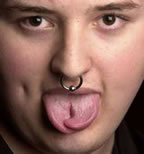 |
THE CREATION AND DIFFUSION OF CULTURE |
 |
CULTURAL SELECTION
Within our own culture we have many different styles in music, food, movies, cars, and clothing. We are also influenced by the cultures of other countries. Popular culture influences us. We are exposed to a multitude of choices.Many products compete to be adopted; as new products are introduced they move from conception to consumption. This process is called cultural selection
Our choices are driven by images in mass media and through the internet. We observe the people around us in our real and virtual lives. Marketers can present to us a fantasy world where the opportunities are endless.
More and more marketing messages are appearing. A product like a movie can have many levels of marketing. The movie itself may contain marketing messages; it could have sponsor tie in products that are available for sale. Before a movie comes out it is already being marketed. The movie sponsor will work in the movie into their campaign. Because of the high cost of production, movie makers use product placement to offset costs. Predicting which movies will be a hit can be difficult.
Movie: The Hulk
Product: Milk
Movie: X men
Product: Diet Pepsi
Advertisers exploit secret codes in video games-Not just ads on billboards in the gaming landscape. Today product placements are embedded them deep video games Some are embedded so that you need secret tips and tricks to unlock special features and other bonuses. Newer, unusual pitches are more effective: Embedded elements tap into players desire to explore inner elements of a game.
Styles
Styles often are rooted in deeper societal trend (politics, social trends). Styles come from interplay of invention and spontaneous action of the consumer.s
Trends can travel between any geographic locations- from local to countries and continents. Style often begins as a risky/unique statement by small group.
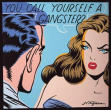 |
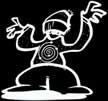 |
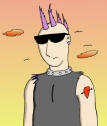 |
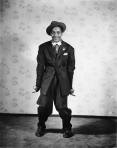 |
 |
Styles tend to wear out as producers of products bring out new options. A trend has staying power compared to a fad.
Popular culture is created by many everyday people, influencers, designers, agencies, individuals, groups, companies.
A Culture Production System is the group of people or organizations who create and market items.
Cultural Production Systems (CPS): the people and organizations who create and market cultural products; Three parts of Cultural Production System creative, managerial, and communications subsystems
We see thousands of marketing messages every day. The children of today are not shocked by an environment filled with advertisements. From a young age they are exposed to ads on television, and on the internet.
Culture production systems compete against each other. When a market place has only a few large companies, the items available will be more similar.Companies that are innovative and who can forecast consumers tastes will be the most successful
The image below shows the funnel that is key to a culture production system. At the top going into the funnel is the symbol pool. These are the ideas, and symbols from culture that influence the creative process. The Culture production system ( creative, managerial and communications) funnels these down to what's known as Cultural Gatekeepers.
At the bottom of the image the gatekkeepers filter the products, services, ideas to us the consumers. But as you see in the image, we as consumers do have the power to innovate or use grass roots movements to input ideas, concepts, etc into the symbol pool.
Image Source: Pearson Education
Culture Production System has 3 components
Cultural Gatekeeper |
|
Art Product |
|
Craft Product |
|
High Art versus Low Art |
|
Cultural Formula |
|
Reality Engineering
Is what we see on TV and social media real or manufactured? We see our friend's facebook feed filled full of amazing pictures of them that may be heavily filtered and chosen to present a particular image to the world which may not be exactly as advertised. People who create reality TV manufacture situations to create lively viewing. Marketer's are no different in manufacturing reality. It's called Reality Engineering.
When real life elements of popular culture are used by marketers in marketing strategies, we have Reality Engineering. One example is infomercials. Infomercials are created by marketers to make a show that is really one big long commercial. It may look like a talk show so we accidentally start watching. Product placement that appears inside shows is also reality engineering. Marketers take elements of culture and insert them into their messages so that their products interact with this new reality. The movie The Blair Witch presented promotional materials to make viewers wonder if they would be watching a real documentary. Other examples of reality engineering include cultural formula and borrowed interest.
Product Placement
Product Placement is arranging to have a product inserted into a movie, TV show or other medium (over 30 companies who do this in US); now we have virtual product placement and even what is being called Immersion where products are actually in the show as part of it. Read more about brand placements in movies at brand channel
See Behind the Screens http://www.youtube.com/watch?v=9eNs-CjxUu4
Proctor and Gamble worked with a publisher to place its lipstick in a book directed to young women and girls. The book called Cathy's Book included letters, pictures and other clues and readers were asked to solve a mystery.
Borrowed Interest
Real life events can be "Borrowed" to promote products. A Marketers gets attention by using the events that consumers may be paying attention to. Reebok marketers filed candidacy papers for their fictional character Terry Tate to run for Governor of California. But Terry is not the first, as Morris the Spokescat for 9 Lives previously ran for office. See Borrowed Interest(inside link) to read about the Office Linebacker's run for Governor. But the marketer's message can be turned on it's heads as Terry returned in 2008 to teach Sarah Palin
He returned again in 2016 to take down Donald Trump https://www.youtube.com/watch?v=djdzZ76YIQM
Cultivation Hypothesis
Media may distort viewers or consumers perceptions of reality. We turn on the news and hear of murders and overestimate the number of murders in our city. Sadly, the phrase, "If it bleeds, it leads." is all too real. Those who watch a lot of TV overestimate violence in the country, drinking smoking and the amount of affluence.
Consider so-called Reality TV. What types of people do you see on those shows? Do you see people who are extreme who make good TV? What happens when you take that version of reality as an actual representation of most of society and most people? What happens when those shows advertise products and use product placements? What happens when those same outrageous Reality TV stars go on instagram and flog products? How is reality affected?
Video by You-User-Generated Content
You Tube started by two young working for PayPal shook up the ad world. YouTube created an audience and forum for capturing images and posting them.
Marketers holding contests for viewers to create ads.(crowdsourcing) Consumers want to be involved in the creation of ads. The more involved (involvement!) the more you like the product. Marketing is no longer just "push"; it wants to be "pull" where you choose to use their message, see their message or make their message.
Clickbait/Viral Content
Urban Dictionary defines clickbait as "An eyecatching link on a website which encourages people to read on. It is often paid for by the advertiser ("Paid" click bait) or generates income based on the number of clicks."
But how new is clickbait and where did it come from? Watch this video of Columbia Professor Tim Wu discussing the recent origins and some connections to our distant past.
Innovations constantly enter market in consumer and industrial settings; when innovation is successful it spreads.What examples can you think of that fit the above model The speed at which diffusion takes place varies; example after 10 years 40% had cable; within 3 years 90 million on web; look at rate of change with adoption of new technology
The Diffusion of innovations theory was originally proposed by Everett Rogers in his book Diffusion of Innovations. The theory attempts to explain how new ideas and technology spread, why they spread and the rate of adoption. Rogers looks at how innovations are communicated in social systems.
According to Rogers there are 4 main things that influence spread: The actual innovation, the communication channels, time and the social system. To be successful an innovation must be widely adopted. In the rate of adoption there is a point where the innovation reaches what's called critical mass or a tipping point. [1}

Chart Source: http://anneshiahardy.strikingly.com/blog/diffusion-and-innovation-reaching-the-millennials
Consumers can be placed into categories based on their innovativeness as to how quickly they adopt new products:
Innovators |
|
Early Adopters |
|
Early Majority |
|
Late Majority |
These people are not so ready to adopt new things. They will adopt something new once it is well established and after the majority has.. They want to fit in with the rest of the population. They make up 34% |
Laggards |
These people resist change and dislike any risk. Their adoption for something comes at the end of the product life cycle. They make up 16% |
The Chasm
The above chart also includes the concept of the chasm. Geoffrey A Moore wrote about the idea in his book Crossing the Chasm. He says there is a chasm between the early adopter (the enthusiasts and visionaries) and early majority (pragmatists) when looking at disruptive or discontinuous innovations.
Types of Innovation
Continuous Innovation |
|
||||
Dynamically Continuous Innovation |
|
||||
Discontinuous Innovation |
|
||||
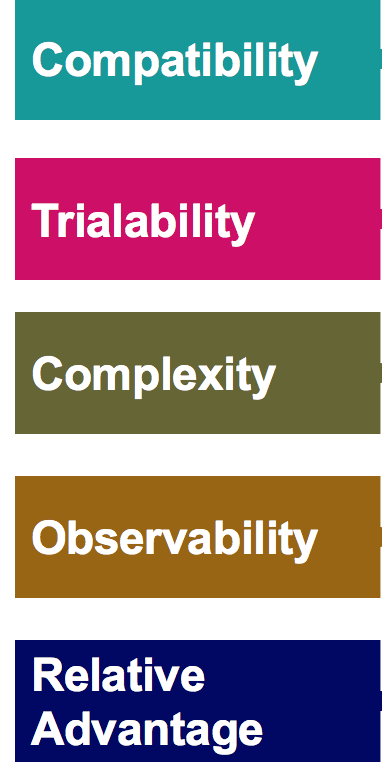
Prerequisites for Successful Adoption
1. Compatibility (fits lifestyle)
2. Trailability (can they try it before adoption)
3. Low Complexity ( easy to use)
4. Observability (can be seen)
5. Relative Advantage ( a benefit that others don't have)
Fashion System |
|
||||
Fashion |
|
||||
Trickle-down theory of fashion |
|
||||
Meme theory |
|
||||
Fashion Life Cycle |
|
||||
Fashion Acceptance Cycle |
|
||||
A trend has staying power compared to a fad. It could have some benefit or it could work well with a lifestyle. A trend is widely adopted
JWT Trends http://www.youtube.com/watch?v=sEzeSym8v3cTrendHunter Top 20 Trends for 2017 https://www.youtube.com/watch?v=h3KncurLfEQ
a fashion with extremely long acceptance cycle (almost anti-fashion due to acceptance over time)
Example: Keds or a food classic like Mr. Peanut.
mullet
leg warmer/headband
pet rock
chia
hula hoop
a very short-lived fashion; fads trickle across and rarely move out of group; visit http://www.badfads.com (outside link)
or see Crazy fads through the decades http://www.crazyfads.com/
Marketers want to get more product sold, they may try variations that are not always successful. To read more about the failure of Blue French Fries, and Adult Baby Food see Food Flops (inside link)
Marketing Cool
San Grewal of the Toronto Star writes, "A few years ago Malcolm Gladwell, a staff writer for The New Yorker, coined the term "cool hunting." It's the search for young people who determine what pop culture trends will emerge from the cool and unfamiliar places that only youth seem to inhabit. According to the theory, most of what is considered cool originates from a small group of people, who, because of their ultra-coolness, inspire others to copy them. When not-so-cool people adopt the fashion, music genre, slang, body modification, etc., it officially becomes a trend. When un-cool people follow suit, the trend dies and it is once again up to the truly cool people, or a new generation of cool people to come up with the next trend" Since then Gladwell has gone on to write several influential books The Tipping Point, Blink and Outliers in 2008. Anyone interested in marketing should read The Tipping Point
Loic Bizel is a "Cool Hunter" with a mission to uncover the street fads of Japan- Parodies of hiphop clothes- cool hunting- anti-marketing- cross branding. He says Japan's hipness is 10 years ahead of the rest of world. See https://www.fashioninjapan .com.
Most people assume that people are influenced only by what is cool; in fact some researchers have show that the "uncool" may influence decisions through negative associations with a product.
Marketing cool is not so new. San Grewal in Toronto Star Feb 22/05 reported that, "Advertisers know little about youth, but still want their attention and Nembutal twentysomethings are balking at being force-fed images" He reported on how McDonald's tried to be cool by using the term "I'd hit it" referring to a cheeseburger.
See The PBS Documentary on The Merchants of Cool
a way to look at cultures by looking at the common aspects across cultures; objective, analytical as seen from outside
a way to look at cultures by looking at the unique aspects of each culture; it is subjective and experiential as experienced by insiders
Food For Thought: Does Advertising Promote Cultural Violence?
Happiness: The story of a rodent's unrelenting quest for happiness and fulfillment.
an Animation By Steve Cutts
References as noted above and: Solomon, Michael R., Zaichkowsky, Judith and Rosemary Polegato. Consumer Behaviour: Buying, Having, Being. Toronto: Pearson Education Canada
PLEASE NOTE: I nformation on this site is for use of the students of this course. For copyright information of the linked sites please see the respective authors.